Don't wanna be here? Send us removal request.
Text
What Is Quick Commerce and Why Does It Matter for App Development?

Quick commerce, or q-commerce, represents a revolutionary shift in consumer expectations and digital retail experiences that is transforming the landscape of mobile application development. This emerging retail model prioritizes instant gratification through ultra-fast delivery services, fundamentally changing how businesses approach digital commerce strategies. Companies investing in comprehensive ecommerce software development solutions must now consider q-commerce capabilities as essential components of their digital transformation initiatives to remain competitive in today's rapidly evolving marketplace.
Define Quick Commerce Versus Traditional E-commerce
Quick commerce distinguishes itself from traditional e-commerce through its emphasis on immediate fulfillment rather than convenience alone. While traditional e-commerce focuses on product variety, competitive pricing, and delivery within days or weeks, q-commerce prioritizes speed and instant availability. Traditional platforms offer extensive product catalogs with longer delivery windows, whereas q-commerce platforms maintain curated selections of high-demand items optimized for rapid dispatch. The fundamental difference lies in operational philosophy: traditional e-commerce optimizes for selection and cost-effectiveness, while q-commerce optimizes for speed and immediacy.
Emphasize Ultra-Fast Delivery (10-30 Minutes)
The defining characteristic of quick commerce is its commitment to ultra-fast delivery timeframes, typically ranging from 10 to 30 minutes. This rapid fulfillment requires sophisticated logistics networks, strategic inventory placement, and advanced routing algorithms that can predict demand patterns and optimize delivery routes in real-time. Mobile applications must integrate GPS tracking, dynamic delivery estimations, and instant order processing capabilities to support these aggressive delivery windows. The technology infrastructure demands real-time communication between customers, inventory systems, and delivery personnel to ensure seamless coordination and accurate timing.
Explore Hyperlocal Model: Dark Stores & Micro-Fulfillment
Quick commerce relies heavily on hyperlocal fulfillment models utilizing dark stores and micro-fulfillment centers strategically positioned within dense urban areas. Dark stores operate as fulfillment-only facilities without customer access, optimized for rapid picking and packing processes. These micro-fulfillment centers stock high-velocity products based on local demand analytics, ensuring popular items remain readily available. The hyperlocal approach reduces delivery distances significantly, enabling the ultra-fast delivery promises that define q-commerce. Mobile applications must integrate with these distributed inventory systems to provide accurate availability information and optimize order routing.
Highlight Core Pillars Like Real-Time Inventory and Instant Orders
Successful quick commerce platforms rely on several core technological pillars that enable seamless user experiences. Real-time inventory management ensures customers see accurate product availability, preventing disappointment and maintaining trust. Instant order processing systems handle high-volume transactions with minimal latency, supporting surge demand during peak periods. Advanced analytics predict demand patterns, optimize inventory placement, and improve delivery efficiency. Integrated payment systems process transactions instantly, while sophisticated logistics algorithms coordinate delivery personnel and optimize routes dynamically.
Conclusion
Quick commerce represents a fundamental shift in consumer expectations and retail technology, demanding innovative approaches to mobile application development and logistics optimization. The success of q-commerce platforms depends on sophisticated technology infrastructure that supports ultra-fast delivery, real-time inventory management, and seamless user experiences. As consumer demand for instant gratification continues growing, businesses must invest in specialized quick commerce app development solutions that can deliver the speed, reliability, and efficiency required to compete in this rapidly evolving market segment.
0 notes
Text
0 notes
Text
How Are SaaS Platforms Transforming Other Key Industries?
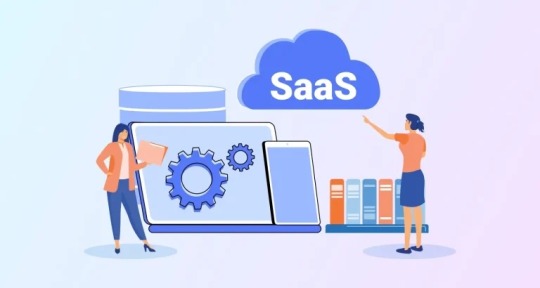
The digital transformation wave powered by Software as a Service (SaaS) platforms is reshaping industries across the global economy, creating unprecedented opportunities for efficiency, innovation, and growth. These cloud-based solutions are breaking down traditional operational barriers and enabling businesses to scale rapidly while maintaining cost-effectiveness. Just as healthcare software development has revolutionized patient care through sophisticated digital solutions, SaaS technology is now transforming diverse sectors by providing specialized tools that address unique industry challenges and streamline complex workflows.
Real Estate: Tenant and Maintenance Management
SaaS platforms have revolutionized real estate management by providing comprehensive solutions for property owners, managers, and tenants. These systems streamline lease management, automate rent collection, and facilitate seamless communication between landlords and tenants. Property maintenance requests are digitized through mobile apps, allowing tenants to report issues instantly while enabling managers to track, prioritize, and resolve problems efficiently. Automated maintenance scheduling prevents costly repairs through proactive upkeep, while integrated accounting features simplify financial reporting and tax preparation. Real-time occupancy tracking and market analysis tools help property owners optimize rental pricing and minimize vacancy periods.
Logistics: Fleet Tracking and Delivery Optimization
Cloud-based logistics platforms have transformed supply chain management through advanced fleet tracking and route optimization capabilities. GPS-enabled systems provide real-time visibility into vehicle locations, driver performance, and delivery status, enabling companies to provide accurate delivery estimates to customers. Machine learning algorithms analyze traffic patterns, weather conditions, and historical data to optimize routes, reducing fuel costs and improving delivery times. Automated dispatch systems assign jobs based on driver availability and proximity, maximizing operational efficiency. Integration with inventory management systems ensures accurate stock levels and prevents delivery delays.
Legal: Case Management and Document Automation
Legal technology platforms have streamlined law firm operations through comprehensive case management systems and automated document generation. These solutions centralize client information, case files, and legal documents in secure, searchable databases. Time tracking and billing automation simplify invoicing and improve revenue collection. Document automation tools generate contracts, legal briefs, and court filings using pre-approved templates, reducing preparation time and ensuring consistency. Client portals provide secure communication channels and document sharing capabilities, enhancing client satisfaction while maintaining confidentiality.
HR & Marketing: Recruitment, Onboarding, Payroll, Campaign Management
SaaS platforms have transformed human resources and marketing operations through integrated solutions that manage the entire employee lifecycle and customer engagement journey. Recruitment platforms streamline candidate sourcing, screening, and interview scheduling while providing analytics on hiring effectiveness. Automated onboarding systems ensure consistent new employee experiences through digital paperwork, training modules, and compliance tracking. Payroll systems handle complex calculations, tax withholdings, and benefits administration across multiple jurisdictions. Marketing automation platforms manage multi-channel campaigns, lead nurturing, and customer segmentation, enabling personalized engagement at scale.
Conclusion
SaaS platforms are driving unprecedented transformation across industries by providing specialized, scalable solutions that address unique sector challenges while reducing operational complexity and costs. From real estate management to legal document automation, these cloud-based tools enable businesses to focus on core competencies while leveraging technology for competitive advantage. As digital transformation continues to accelerate, SaaS applications will remain at the forefront of innovation, empowering organizations across all sectors to achieve greater efficiency, improved customer experiences, and sustainable growth in an increasingly digital economy.
Key Benefits of SaaS Across Industries:
Streamlined operations and automated workflow management
Real-time data visibility and analytics-driven decision making
Reduced IT infrastructure costs and maintenance requirements
Scalable solutions that grow with business needs and market demands
Enhanced collaboration and communication across teams and departments
0 notes
Text
0 notes
Text
How Can You Monitor and Optimize AI Applications in Production?
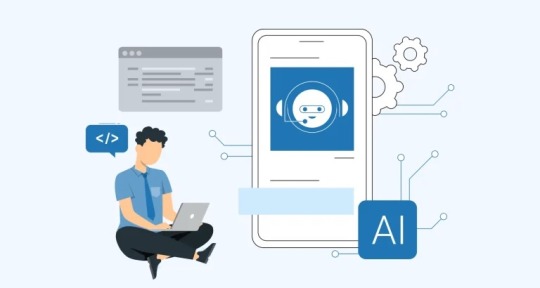
Deploying AI applications in production environments requires robust monitoring and optimization strategies to ensure reliable performance and cost-effectiveness. Modern businesses increasingly rely on sophisticated monitoring frameworks to maintain their AI systems, whether they're building traditional web applications through ASP.NET development services or implementing cutting-edge machine learning solutions. The complexity of AI workloads demands comprehensive observability solutions that go beyond traditional application monitoring.
Using Telemetry: Logging, Tracing, and Metrics via OpenTelemetry
OpenTelemetry provides a standardized approach to collecting telemetry data from AI applications. This framework enables comprehensive visibility into your AI systems through three key pillars:
Logging: Capture detailed information about model predictions, input data quality, and system events. Structured logging helps identify patterns in model behavior and track decision-making processes.
Tracing: Monitor the complete request flow through your AI pipeline, from data preprocessing to model inference and post-processing. Distributed tracing reveals bottlenecks and dependencies across microservices.
Metrics: Collect quantitative data about model performance, latency, throughput, and resource utilization. Custom metrics can track business-specific KPIs like prediction accuracy and data drift.
Setting Up Alerts and Dashboards for AI Workloads
Effective monitoring requires proactive alerting systems that notify teams of potential issues before they impact users. Key alerting strategies include:
Performance Alerts: Set thresholds for response times, error rates, and model accuracy degradation. Configure alerts for anomalous prediction patterns or sudden changes in model behavior.
Resource Alerts: Monitor CPU, memory, and GPU utilization to prevent resource exhaustion. Set up alerts for cost spikes or unexpected scaling events.
Data Quality Alerts: Implement checks for data drift, missing features, or outliers in input data that could affect model performance.
Maintaining Performance and Cost Efficiency
Optimization strategies focus on balancing performance with operational costs:
Model Optimization: Implement techniques like quantization, pruning, and knowledge distillation to reduce model size and inference time while maintaining accuracy.
Infrastructure Scaling: Use auto-scaling policies based on demand patterns and implement spot instances for cost-effective training workloads.
Caching Strategies: Implement intelligent caching for frequently requested predictions and preprocessed data to reduce computational overhead.
The landscape of AI applications development continues evolving rapidly, making monitoring and optimization critical for success. Organizations must adopt comprehensive observability practices that encompass telemetry collection, proactive alerting, and continuous optimization to maintain competitive advantage in production environments.
0 notes
Text
0 notes
Text
In What Ways Does .NET Integrate with Azure AI Services?

The integration between Microsoft's .NET framework and Azure AI Services represents one of the most seamless and powerful combinations available for building intelligent applications today. This strategic alliance provides developers with unprecedented access to cutting-edge artificial intelligence capabilities while maintaining the robust, enterprise-grade foundation that .NET is renowned for. Organizations utilizing professional ASP.NET development services are leveraging this integration to rapidly deploy sophisticated AI solutions that would have previously required months of development and specialized expertise to implement effectively.
Native SDK Support for Comprehensive AI Services
The .NET ecosystem provides native Software Development Kit (SDK) support for the entire spectrum of Azure AI Services, enabling developers to integrate advanced artificial intelligence capabilities with minimal complexity and maximum performance.
Core Azure AI Services Integration:
• Azure Cognitive Services: Pre-built AI models for vision, speech, language, and decision-making capabilities.
• Azure OpenAI Service: Direct access to GPT-4, DALL-E, and other large language models through native APIs.
• Azure Custom Vision: Tailored image classification and object detection model development.
• Azure Speech Services: Real-time speech-to-text, text-to-speech, and speech translation functionality.
• Azure Language Understanding (LUIS): Natural language processing for intent recognition and entity extraction.
• Azure Form Recognizer: Automated document processing and data extraction capabilities.
Advanced AI Integration Features:
• Asynchronous Operations: Non-blocking API calls optimized for high-performance applications.
• Batch Processing: Efficient handling of large datasets through bulk operations.
• Real-time Streaming: Live audio and video processing capabilities.
• Model Customization: Fine-tuning pre-built models with domain-specific data.
• Multi-modal Processing: Combined text, image, and audio analysis in single workflows .
Edge Deployment: Local model execution for reduced latency and offline capabilities.
Enterprise-Grade Security and Compliance Benefits
The integration between .NET and Azure AI Services delivers comprehensive security features that meet the stringent requirements of enterprise applications while ensuring regulatory compliance across multiple industries.
Authentication and Access Control:
• Azure Active Directory Integration: Seamless single sign-on and multi-factor authentication.
• Managed Identity Support: Secure service-to-service authentication without storing credentials.
• Role-Based Access Control (RBAC): Granular permissions management for AI resources.
• API Key Management: Secure key rotation and access monitoring capabilities.
• OAuth 2.0 Implementation: Industry-standard authentication protocols for third-party integrations.
• Certificate-Based Authentication: Enhanced security through digital certificate validation.
Compliance and Data Protection:
• GDPR Compliance: Data residency controls and right-to-be-forgotten implementations.
• HIPAA Certification: Healthcare-grade security for medical AI applications.
• SOC 2 Type II: Comprehensive security, availability, and confidentiality controls.
• Data Encryption: End-to-end encryption for data at rest and in transit.
• Audit Logging: Comprehensive activity tracking for compliance reporting.
• Geographic Data Residency: Control over data processing locations for regulatory requirements.
Streamlined Development Workflows with Azure SDKs
The Azure SDKs for .NET provide developers with intuitive, well-documented tools that dramatically simplify the integration process while maintaining enterprise-level performance and reliability.
Developer Productivity Features:
• NuGet Package Integration: Easy installation and dependency management through familiar tools.
• IntelliSense Support: Full code completion and documentation within Visual Studio environments.
• Async/Await Patterns: Modern asynchronous programming models for responsive applications.
• Error Handling: Comprehensive exception handling with detailed error messages and retry policies.
• Configuration Management: Simplified setup through appsettings.json and environment variables.
• Dependency Injection: Native support for .NET Core's built-in dependency injection container.
Deployment and Monitoring Advantages:
• Azure DevOps Integration: Seamless CI/CD pipelines for automated deployment and testing.
• Application Insights: Real-time monitoring and performance analytics for AI-powered applications.
• Auto-scaling: Dynamic resource allocation based on application demand and usage patterns.
• Load Balancing: Distributed processing across multiple instances for high availability.
• Version Management: Blue-green deployments and rollback capabilities for risk-free updates.
• Cost Optimization: Usage-based pricing models with detailed billing and cost management tools
Real-World Implementation Benefits:
• Reduced Development Time: 60-80% faster implementation compared to building AI capabilities from scratch.
• Lower Maintenance Overhead: Microsoft-managed infrastructure eliminates operational complexity.
• Scalability Assurance: Automatic scaling to handle millions of requests without performance degradation.
• Global Availability: Worldwide data center presence ensuring low-latency access for global applications.
The synergy between .NET and Azure AI Services creates an unparalleled development experience that combines familiar programming paradigms with cutting-edge artificial intelligence capabilities. This integration empowers organizations to accelerate their AI applications development initiatives while maintaining the security, scalability, and reliability standards that modern enterprise applications demand.
0 notes
Text
Why Is Early AI Diagnosis Revolutionizing Dental Care?
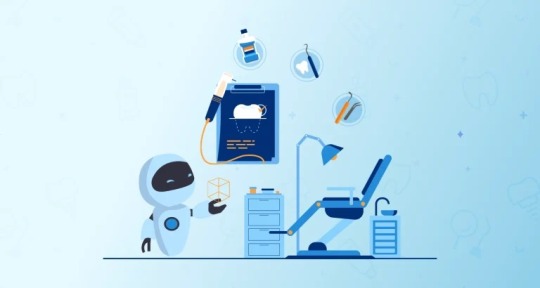
Why Is Early AI Diagnosis Revolutionizing Dental Care?
Traditional dental diagnostics often identify problems only after significant damage has occurred, leading to more invasive treatments and higher costs for patients. The paradigm of reactive dental care is rapidly shifting toward proactive prevention through intelligent technology. Advanced ai software development is enabling dental professionals to detect oral health issues at their earliest stages, often before clinical symptoms appear, transforming patient outcomes and revolutionizing preventive care strategies through sophisticated machine learning algorithms and biomarker analysis.
Early Detection of Cavities, Gum Disease, and Oral Cancer
AI-powered diagnostic systems excel at identifying subtle changes that indicate developing oral health conditions:
Advanced Caries Detection
Machine learning analysis of microscopic enamel demineralization patterns
Detection of incipient lesions before radiographic visibility
AI-powered fluorescence analysis for early cavity identification
Predictive modeling of caries progression based on individual risk factors
Periodontal Disease Early Warning
Automated analysis of gingival inflammation markers in digital photographs
AI-driven assessment of bone loss patterns in radiographic images
Real-time monitoring of periodontal pocket depth changes
Predictive algorithms for aggressive periodontitis risk assessment
Oral Cancer Biomarker Recognition
AI-powered analysis of tissue texture and color variations
Early identification of dysplastic changes in oral mucosa
Automated screening of high-risk lesions requiring biopsy
Integration with molecular diagnostics for comprehensive cancer screening
AI-Powered Saliva and Biomarker Analysis
Revolutionary diagnostic capabilities emerge through intelligent analysis of biological markers:
Comprehensive Saliva Testing
AI-driven analysis of salivary proteins and enzymes indicating disease
Real-time monitoring of inflammatory markers and bacterial populations
Predictive assessment of caries risk through salivary pH and buffer capacity
Hormonal analysis for periodontal disease susceptibility evaluation
Molecular Biomarker Detection
Machine learning identification of cancer-specific genetic markers
AI-powered analysis of immune system responses to oral pathogens
Early detection of systemic diseases through oral biomarkers
Personalized risk assessment based on genetic predisposition factors
Point-of-Care Diagnostic Systems
Portable AI-enabled devices for chairside biomarker analysis
Instant results for bacterial identification and antibiotic sensitivity
Real-time monitoring of treatment response through biomarker changes
Integration with electronic health records for comprehensive patient tracking
Impact on Preventive Dental Health Strategies
Early AI diagnosis fundamentally transforms preventive dentistry approaches:
Personalized Prevention Protocols
AI-driven risk stratification for individualized preventive care plans
Customized oral hygiene recommendations based on specific risk factors
Targeted intervention strategies for high-risk patients
Optimized recall intervals based on individual disease progression patterns
Population Health Management
Large-scale screening programs using AI-powered diagnostic tools
Community-based early detection initiatives for underserved populations
Epidemiological analysis of oral disease patterns and trends
Public health policy development based on AI-generated insights
Treatment Planning Revolution
Prevention-focused treatment plans that address root causes
Early intervention strategies that preserve natural tooth structure
Minimally invasive procedures based on precise early diagnosis
Cost-effective care delivery through prevention rather than treatment
Patient Engagement Enhancement
Visual AI reports that help patients understand their oral health status
Predictive modeling showing potential future outcomes without intervention
Gamified prevention programs based on individual risk profiles
Educational tools that demonstrate the value of preventive care
Healthcare System Benefits
Reduced healthcare costs through early intervention strategies
Improved population health outcomes and quality of life metrics
Enhanced efficiency in dental practice workflow and resource allocation
Better integration between dental and medical healthcare delivery
The transformation of dental care through artificial intelligence represents a fundamental shift from reactive treatment to proactive prevention. Early detection capabilities enabled by AI in dentistry are creating a new standard of care that prioritizes prevention, reduces treatment burden, and improves long-term oral health outcomes for patients worldwide.
0 notes
Text
Why Is Clinical Validation Crucial for AI Skin Diagnosis?

As AI becomes a dominant force in skincare, the need for clinically validated systems has never been more urgent. Solutions like AI Skin Diagnosis are transforming user experiences. But their accuracy and trustworthiness hinge on rigorous testing against medical benchmarks. Businesses investing in this innovation must ensure they’re backed by compliant, secure, and proven AI software development services to deliver reliable and clinically safe outcomes.
Conducting Studies to Compare AI vs Dermatologist Assessments
Clinical trials are the gold standard to evaluate any medical-grade technology. AI-powered skin diagnosis must be tested against real dermatologist evaluations. These comparative studies analyze the diagnostic precision, speed, and consistency of AI models across varied skin types and conditions.
The results from these studies help determine whether the AI system is fit for purpose. It must accurately detect acne, pigmentation, eczema, and more — just as a dermatologist would. Clinical data adds the backbone needed to roll out the solution at scale with medical credibility.
Establishing Credibility Through Medical-Grade Validation
Trust is non-negotiable when dealing with user health data. That’s where clinical validation steps in — offering a seal of credibility. AI tools gain user and industry trust only when their performance matches or exceeds human accuracy.
Medical-grade validation ensures the AI is not just smart, but safe. From diagnostics to treatment recommendations, every AI suggestion must reflect scientific rigor. This helps skincare brands position their app as more than just a cosmetic tool — it becomes a verified health-tech product.
Ensuring Regulatory and Clinical Reliability
In many regions, skin diagnosis apps fall under the purview of health regulations. This means AI platforms must comply with HIPAA, GDPR, or FDA standards depending on the market. Clinical validation helps fulfill these criteria.
It’s not enough for the tool to work — it must be certifiable, secure, and transparent. That’s why brands rely on specialized AI software development services to navigate the complexities of compliance and validation, especially in critical solutions like AI Skin Diagnosis.
0 notes
Text
What Are the Business Benefits of AI Recommendation Systems?
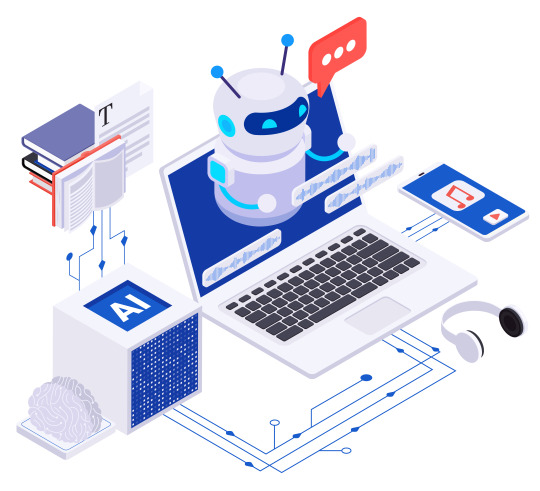
Businesses today operate in highly competitive markets, and standing out requires personalization and efficiency. That’s exactly what intelligent AI recommendation systems deliver. These tools provide smarter, faster, and more tailored user experiences that boost sales and loyalty. To leverage these technologies fully, companies often choose to hire AI Developers who specialize in building powerful recommendation engines.
Increased Conversion Rates and ROI
AI recommendation engines directly impact sales performance. They present users with products or content they're likely to engage with, driving purchases. By analyzing behavior in real time, these systems improve upselling and cross-selling efforts.
Personalized product suggestions reduce decision fatigue and increase checkout completion rates. Ultimately, businesses see a measurable uplift in return on investment.
Better Customer Engagement and Satisfaction
When users feel understood, they engage more deeply. AI systems deliver hyper-personalized experiences that lead to higher satisfaction. By continuously learning from user interactions, recommendations remain relevant over time.
This leads to more frequent visits, longer session durations, and greater brand loyalty. Customers appreciate consistency, accuracy, and simplicity in their browsing or shopping experience.
Smarter Inventory and Product Management
AI recommendation systems also provide value behind the scenes. By identifying which products perform well with specific customer segments, businesses can better forecast demand. This prevents stockouts and overstocking issues.
Smarter inventory planning leads to reduced costs, faster restocks, and less waste. Businesses gain clarity on what to produce, promote, or retire.
Enhanced Decision-Making with Predictive Analytics
AI doesn’t just react—it predicts. Using historical and real-time data, recommendation systems guide product strategy, marketing efforts, and customer journey optimizations. Predictive analytics allow leaders to make confident, data-backed decisions.
From pricing models to promotion timing, these insights give businesses an edge in both strategy and execution.
Final Thoughts
AI recommendation systems transform how businesses operate, engage, and scale. They boost conversions, increase efficiency, and create meaningful experiences. To unlock their full power, organizations often choose to hire AI Developers with hands-on experience in delivering impactful solutions. Investing in the right AI approach today ensures a smarter and more profitable tomorrow.
0 notes
Text
How Artificial Intelligence is Reshaping Modern Healthcare Applications?
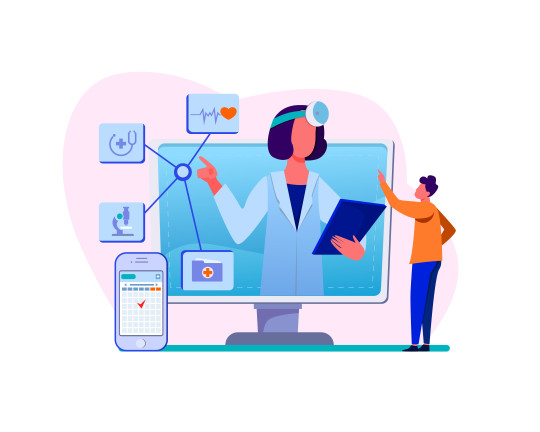
The global healthcare sector saw a massive shift in digital transformation after the COVID-19 pandemic. Healthcare was quick to adapt online software solutions for personalized medicine delivery, online doctor consultations, to personal health tracking apps. Now, there’s a new wave - the role of AI in transforming healthcare software development. AI is penetrating many industries, and healthcare is in no way lagging behind. From drug discovery to patient diagnosis and much more, AI is helping streamline healthcare solutions and providing a new spectrum of possibilities, strengthening the R&D in the healthcare industry.
Whether you are looking to automate diagnostics or you are a healthcare-startup looking to launch AI-powered products like symptom checkers, having a proper understanding of how AI can revolutionize the software development process is key. This blog is your ultimate guide in exploring the Role of Artificial Intelligence in the Healthcare Industry and how to get the most out of it through reliable AI development services.
How is AI Reshaping the Healthcare Software Market?
As per a study conducted, the USA had the greatest revenue of implementing AI in healthcare with a promising revenue of $11.8 billion USD. The healthcare industry is dealing with vast patient records and databases, complex treatment plans and the constant need to improve their care delivery. Manual processes simply cannot keep up with the growing demand of the healthcare industry. Hence, artificial intelligence software development is capable of handling large datasets faster, providing real-time insights and suggestions, and also automating repetitive tasks.
With proper AI algorithms in place, doctors can use predictive analytics and personalized medicines to improve healthcare solutions and efficiency. For building such intelligent healthcare solutions, businesses are turning to a professional healthcare software development company or companies that have the perfect domain expertise and skilled AI developers for hire.
Top Applications of AI in Healthcare Software Development
AI can be implemented in various fields of healthcare software development. Here are some of the primary and most important places where healthcare is benefiting from AI integration:
1. Medical Imaging and Diagnostics
Many hospitals are now turning to a healthcare software development company that can integrate deep learning models for improving analysis accuracy of medical images like MRIs, CT Scans and X-rays. These tools can help radiologists to identify disasters at early stages with higher precision.
2. Virtual Health Assistants and Chatbots
You can also build AI-powered chatbots that redefine patient engagement. These bots can answer health-related questions after being fed an authentic healthcare knowledge-base. It can also remind users about medications, or help as a mental health support expert. They reduce the burden of customer support teams, while providing more prompt and 24/7 availability, which improves patient satisfaction.
3. Predictive Analytics for Early Disease Detection
AI can be monumental for predicting disease outbreaks and reducing chronic illness risks with analysis of patient history, lab results and wearable device data. These predictive models enable doctors to take early interventions, which can help reduce hospitalization rates and treatment costs.
4. Personalized Treatment Plans
AI is also being majorly used for improving personalized treatment plans for patients. Doctors are using precision medicine based on patient’s medical records, lifestyle choices and other such factors. This provides better chances at fighting cancer, heart-related diseases and even many auto-immune diseases.
5. Robotic Process Automation (RPA)
Using RPA in healthcare tasks automation can help reduce the work-load and efforts of back-office administrative tasks like claims processing, billing and data entry. AI enabled RPA bots can help medical professionals spend more time on patient care without worrying about repetitive tasks.
Benefits of Integrating AI into Healthcare Software
AI doesn’t just modernize healthcare, it improves its core efficiency. Below are key benefits of incorporating AI in healthcare software development:
Enhanced Accuracy
AI can help improve diagnostics accuracy. You can analyze complex medical data such as lab reports and patient history. AI can identify patterns that can be overlooked by the human eye, and make faster and more accurate diagnosis.
Scalability
AI-powered healthcare systems can provide unmatched scalability to deal with increasing patient data. It can help manage ten patient cases to thousands of patient cases, without compromising quality. This makes it easier for clinics and hospitals to expand their service efficiently and meet growing demands without causing much infrastructure cost.
Faster Time to Diagnosis
AI can help the analysis of test results, patient records, scans and other aspects. This can speed up diagnostics decisions, which can be helpful for emergency care. It also cut down waiting times, improving clinical assessment and quality of service.
Improved Patient Outcomes
Since AI takes a more personalized approach to patient care, it also improves the chances of successful outcomes. It takes in account many factors like genetics and lifestyle habits for creating tailored care plans that match individual’s profiles. This reduces the risk of ineffective treatments and improves recovery rates.
What to Look for in AI Healthcare Software Developers
Experience in AI and Healthcare
Hire AI developers that have experience working in the healthcare industry as well as implementing AI capabilities. They should be able to handle healthcare workflows, match compliance needs and create patient-driven user experiences.
Expertise in AI Technologies
Look for healthcare AI developers that have expertise in next-gen technologies like NLP, computer vision, deep learning and machine learning. It is better if they have experience using Python, TensorFlow and many other such frameworks and libraries.
Understanding of Medical Standards
Developers should be aware of standards such as HL7, DICOM and FHIR to build interoperable healthcare applications.
How to Choose the Right Development Company?
Choosing with the right AI development services provider is a critical step. Whether you're building a hospital management system, telehealth platform, or AI-powered diagnostic tool, choose a team that offers:
End-to-end development capabilities (frontend, backend, AI models, testing, deployment)
Healthcare domain expertise and case studies
Strong understanding of compliance and cybersecurity
Post-deployment support and AI model optimization services
Future Trends: Where AI is Taking Healthcare Next
AI in Mental Health
AI-based sentiment analysis and conversational agents help detect early signs of mental health issues and connect the users with relevant support professionals.
AI-Enabled Wearables
AI is also being used for health trackers to get real-time health monitoring and alerts for irregular patterns such as high glucose levels and arrhythmia.
AI in Drug Discovery
One of the most innovative use cases for AI in healthcare is in drug discovery. With help of AI powered algorithms, researchers can speed up testing how different compounds interact with the human body, enabling faster time-to-market for new treatments.
Final Words
The role of AI in the healthcare industry is not just a futuristic possibility, it has already started powering many intelligent healthcare solutions. From improving patient diagnosis accuracy to providing innovation in drug discovery and treatment methods, AI is revolutionizing healthcare software development.
0 notes
Text
How Can You Authenticate Users in Your iOS App Using Supabase?

User authentication is one of the most critical components of any mobile application. With Supabase, integrating secure and reliable user authentication in your SwiftUI-based iOS app becomes seamless. Whether you're building an MVP or planning to hire iOS app developer, Supabase offers tools for robust email/password authentication. Through this Supabase SwiftUI Integration, developers can implement login, registration, and session management effortlessly.
1. Implementing Email/Password Authentication with Supabase
Supabase provides built-in support for traditional email/password authentication. You can configure it easily in the Supabase dashboard under the Authentication section. Once your API keys are in place, use Supabase's Swift client to trigger sign-up and sign-in requests:
swift
try await supabase.auth.signUp(email: "[email protected]", password: "SecurePassword123")
2. Handling Login and Signup via SwiftUI
In SwiftUI, you can create user-friendly interfaces for login and signup screens using form elements like TextField and SecureField. After user input, send the data to Supabase’s signIn or signUp methods. You can also display real-time feedback like error messages or success prompts based on the API responses.
3. Using Supabase Session Tokens to Manage User State
Once a user signs in, Supabase returns a session object containing an access token. You can store this token securely using the iOS Keychain and use it to track the user’s login state across app launches. The Supabase client also automatically refreshes expired sessions to keep the user authenticated without manual re-login.
4. Tips for Secure Authentication Flows in iOS
Use biometric authentication like Face ID as a second layer.
Store tokens in Keychain for better security.
Always validate email formats and password strength.
Avoid hardcoding sensitive keys in your codebase.
By leveraging Supabase SwiftUI Integration for user authentication, iOS apps can be made highly secure and user-friendly. Whether you are a solo dev or looking to hire iOS app developer, Supabase helps streamline the process with minimal backend effort and maximum reliability.
0 notes
Text
0 notes